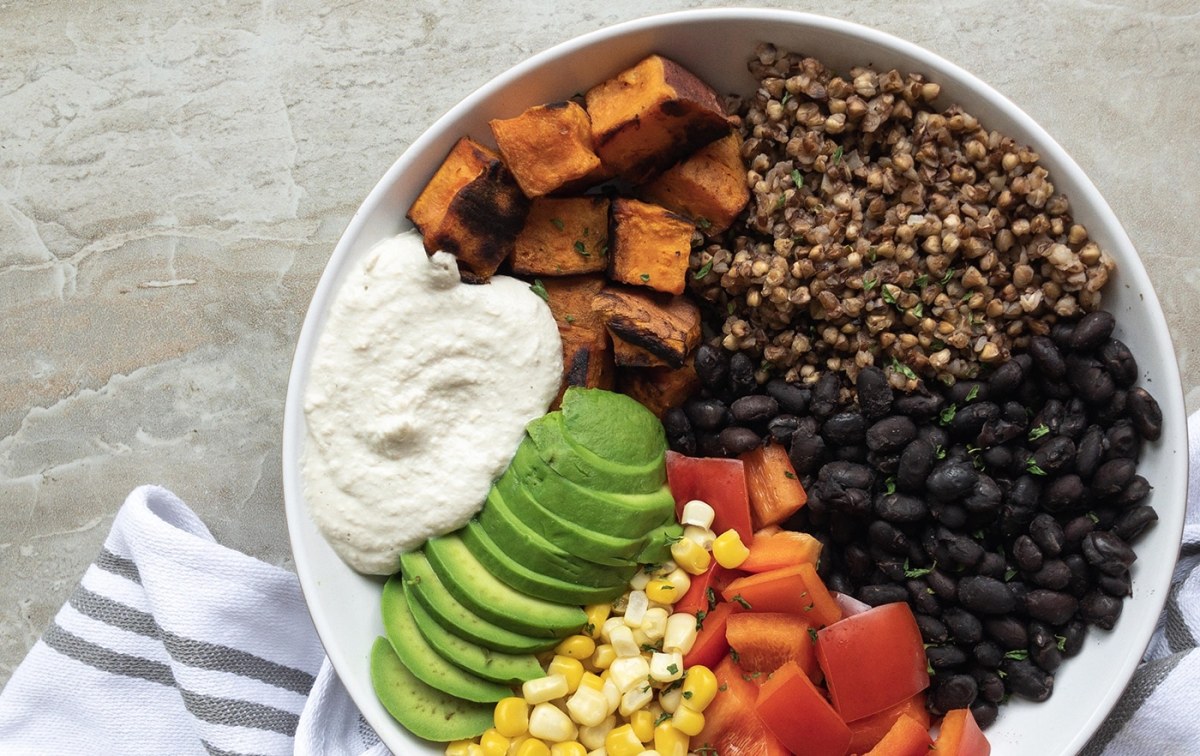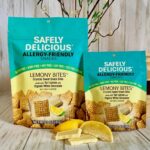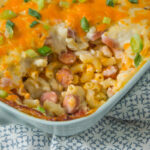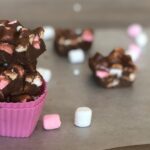Imagine vibrant bowls brimming with color and flavor, each ingredient carefully chosen to deliver a powerhouse of plant-based protein without compromising on taste or safety. This exploration dives into the world of allergen-free power bowls, showcasing three unique recipes featuring tofu, lentils, and quinoa. We’ll guide you through detailed preparation, highlighting techniques to avoid cross-contamination and offering creative serving suggestions to elevate your culinary experience. Discover how to effortlessly incorporate these nutritious and delicious meals into your daily routine, maximizing your health and well-being.
From understanding hidden allergens in seemingly harmless ingredients to mastering the art of visually stunning presentation, we cover every aspect of creating and enjoying these allergen-free powerhouses. Learn practical tips for ingredient substitutions, ensuring each bowl caters to your individual dietary needs and preferences. Prepare to embark on a culinary adventure that’s both satisfying and safe.
Recipe Development & Variations

These allergen-free power bowls are designed to be nutritious, delicious, and adaptable to various dietary needs and preferences. Each recipe highlights a different plant-based protein source, offering diverse flavors and textures. The nutritional information provided is an approximation and may vary slightly depending on the specific ingredients used.
Power Bowl Recipes
Three distinct power bowl recipes are presented below, each featuring a different primary plant-based protein: tofu, lentils, and quinoa. These recipes are designed to be easily customizable based on individual dietary needs and available ingredients.
Tofu Power Bowl
This vibrant bowl features crispy pan-fried tofu, delivering a satisfying savory punch. The vibrant colors and textures make it visually appealing, while the nutritional profile ensures a balanced and energy-boosting meal.
Ingredients:
* 1 block (14 oz) extra-firm tofu, pressed and cubed
* 1 tbsp olive oil
* 1 cup broccoli florets
* 1/2 cup shredded carrots
* 1/2 cup edamame
* 1/4 cup chopped red bell pepper
* 1/4 cup toasted sesame seeds
* 2 tbsp tamari or coconut aminos
* 1 tbsp sesame oil
* 1 tbsp rice vinegar
Nutritional Information (per serving, approximate): Calories: 450, Protein: 30g, Fiber: 10g
Lentil Power Bowl
This hearty and flavorful bowl utilizes lentils as its protein base, providing a substantial and satisfying meal. The combination of textures and flavors offers a complex and enjoyable eating experience.
Ingredients:
* 1 cup red lentils, cooked
* 1 cup chopped kale
* 1/2 cup chopped cucumber
* 1/4 cup chopped red onion
* 1/4 cup chopped fresh cilantro
* 2 tbsp lemon juice
* 1 tbsp olive oil
* Salt and pepper to taste
Nutritional Information (per serving, approximate): Calories: 380, Protein: 25g, Fiber: 20g
Quinoa Power Bowl
This power bowl utilizes quinoa, a complete protein, as its base, offering a light yet fulfilling meal. The combination of grains, vegetables, and a flavorful dressing provides a complete and balanced nutritional profile.
Ingredients:
* 1 cup cooked quinoa
* 1 cup roasted sweet potatoes, cubed
* 1/2 cup black beans
* 1/4 cup chopped avocado
* 1/4 cup salsa
* 2 tbsp lime juice
* 1 tbsp olive oil
* Salt and pepper to taste
Nutritional Information (per serving, approximate): Calories: 400, Protein: 15g, Fiber: 15g
Nutritional Comparison
The following table summarizes the nutritional information for each power bowl recipe, highlighting key macronutrients and micronutrients. Note that these values are approximate and can vary based on ingredient substitutions and portion sizes.
| Recipe | Protein (g) | Fiber (g) | Key Micronutrients |
|---|---|---|---|
| Tofu Power Bowl | 30 | 10 | Iron, Calcium, Vitamin B12 (if fortified tofu is used) |
| Lentil Power Bowl | 25 | 20 | Iron, Folate, Magnesium |
| Quinoa Power Bowl | 15 | 15 | Iron, Magnesium, Manganese |
Ingredient Substitutions
Many ingredients in these recipes can be substituted to accommodate dietary preferences or ingredient availability. For example, broccoli could be replaced with spinach or Brussels sprouts in the Tofu Power Bowl. In the Lentil Power Bowl, brown or green lentils could substitute for red lentils, altering the texture slightly. Similarly, in the Quinoa Power Bowl, different beans like chickpeas or pinto beans could be used instead of black beans. These substitutions will slightly alter the nutritional profile, but the overall health benefits will remain.
Step-by-Step Preparation Guides
Creating delicious and nutritious allergen-free power bowls is easier than you might think! This guide provides a detailed, step-by-step process for preparing a vibrant Quinoa Power Bowl, packed with plant-based protein and bursting with flavor. Each step is designed to be easily followed, even for beginner cooks. The result is a satisfying and healthy meal ready in under 30 minutes.
This recipe focuses on building layers of flavor and texture, ensuring a visually appealing and incredibly tasty power bowl. We will be focusing on the preparation of a Quinoa Power Bowl, a hearty and versatile option perfect for a quick lunch or a light dinner.
Quinoa Power Bowl Preparation
The following steps detail the preparation of a vibrant and nutritious Quinoa Power Bowl, highlighting the visual aspects of each stage. This recipe prioritizes fresh, colorful ingredients to create a visually appealing and delicious meal.
- Cooking the Quinoa: Begin by rinsing one cup of quinoa under cold water until the water runs clear. This removes any saponins, which can impart a bitter taste. The quinoa at this stage appears pearly white and slightly translucent. Then, combine the rinsed quinoa with two cups of water in a saucepan. Bring to a boil, then reduce heat to low, cover, and simmer for 15 minutes, or until all the water is absorbed. The cooked quinoa will be fluffy, light, and pearly white with a slightly opaque appearance. It will have a soft, slightly chewy texture.
- Roasting the Vegetables: While the quinoa cooks, prepare the vegetables. Chop one cup of broccoli florets into bite-sized pieces and half a red bell pepper into similar sized pieces. Toss the broccoli and bell pepper with one tablespoon of olive oil, a pinch of salt, and a pinch of black pepper. Spread them evenly on a baking sheet. Roast in a preheated oven at 400°F (200°C) for 15-20 minutes, or until tender-crisp and slightly browned at the edges. The broccoli will turn a vibrant green, with slightly charred edges for a deeper color and smoky flavor. The red bell pepper will soften and deepen in color, becoming a rich, reddish-orange with slightly caramelized edges.
- Preparing the Black Beans: Drain and rinse one can (15 ounces) of black beans. The beans, initially dark and shiny in the can, will appear slightly darker and less glossy after rinsing. Their texture will be firm but not hard. You can lightly mash some of the beans for added texture variation in the bowl if desired.
- Assembling the Power Bowl: Once the quinoa is cooked and the vegetables are roasted, it’s time to assemble the power bowl. Start with a base of cooked quinoa in a bowl. Next, add the roasted broccoli and bell pepper, creating a visually appealing layer of contrasting colors and textures. Then, top with the black beans, adding depth and a contrasting color. A sprinkle of chopped cilantro adds a fresh, vibrant green hue and a burst of flavor.
- Adding the Dressing: A simple lime vinaigrette complements the bowl perfectly. Whisk together the juice of one lime, one tablespoon of olive oil, a pinch of salt, and a pinch of cumin. Drizzle the dressing over the assembled bowl, allowing it to coat the ingredients evenly. The dressing will add a vibrant citrusy color and glossy shine to the bowl.
Storing Leftovers
Proper storage is crucial for maintaining the freshness and nutritional value of your power bowl. The following guidelines ensure your leftovers remain enjoyable and healthy.
Store leftovers in an airtight container in the refrigerator for up to 3 days. Separate the dressing from the bowl to prevent the quinoa and vegetables from becoming soggy. When ready to eat, reheat gently in the microwave or on the stovetop, adding the dressing just before serving. This will maintain the vibrant colors and crisp texture of the ingredients. Avoid over-heating, as this can diminish the nutritional value and appealing appearance of the bowl.
Allergen Avoidance & Safety
Creating truly allergen-free power bowls requires meticulous attention to detail throughout the entire preparation process. Cross-contamination is a significant risk, and even trace amounts of allergens can trigger severe reactions in sensitive individuals. This section details crucial steps to minimize this risk and ensure the safety of your allergen-free creations.
Preventing cross-contamination is paramount when preparing allergen-free meals. Imagine a vibrant power bowl, meticulously crafted to be free from gluten, dairy, nuts, and soy – only to be compromised by a careless action. The consequences can be serious, ranging from mild discomfort to life-threatening anaphylaxis. Therefore, implementing robust preventative measures is not merely a suggestion, but a necessity.
Preventing Cross-Contamination
To effectively prevent cross-contamination, dedicated preparation areas and equipment are essential. Visualize a kitchen divided into zones: one exclusively for allergen-free preparation, complete with its own cutting boards, utensils, and cooking surfaces. Another area could handle ingredients containing potential allergens. This clear separation minimizes the risk of accidental contact. Thorough cleaning between uses is vital; imagine the microscopic particles of gluten clinging to a cutting board – a single grain can trigger a reaction. Always wash and sanitize all surfaces and tools between each use with hot, soapy water, followed by a rinse with clean water. Consider using separate, clearly labeled containers for each ingredient to avoid accidental mixing. For example, a vibrant green container dedicated to allergen-free quinoa, a bright red container for gluten-free oats, and a bright blue container for dairy-free yogurt. This color-coded system makes it easy to visually distinguish between ingredients and prevent errors.
Identifying Hidden Allergens
Many seemingly innocuous ingredients can harbor hidden allergens. For example, certain spice blends might contain wheat flour as an anti-caking agent, or soy lecithin might be present in processed foods. Soy sauce, a common ingredient, is clearly a source of soy, but soy lecithin can be found in unexpected places like bread and processed meats. Similarly, cross-contamination can occur during manufacturing, so even products labeled “gluten-free” may contain trace amounts. Always check ingredient lists meticulously, and opt for certified allergen-free products whenever possible. Seeking out brands that prioritize rigorous allergen control and testing is crucial. When in doubt, contact the manufacturer directly to inquire about their production processes and allergen management practices. For example, if a recipe calls for a commercially prepared spice blend, check the label for gluten or other allergens before incorporating it.
The Importance of Label Reading and Ingredient Sourcing
Careful label reading and ingredient sourcing are fundamental to allergen-free cooking. Imagine yourself scanning a product label, your eyes searching for those tell-tale words: “contains wheat,” “may contain nuts,” or “processed in a facility that also processes soy.” This vigilant approach helps to avoid accidental exposure. Choose products with clear and concise labeling, preferably those explicitly stating that they are “allergen-free” or “certified gluten-free,” depending on your needs. Sourcing ingredients directly from reputable suppliers, such as farmers’ markets or local farms, can provide greater transparency and control over the ingredients’ origin and handling. This allows you to engage in direct conversations with producers about their farming practices and allergen management protocols, building a higher level of confidence in the purity of your ingredients.
Creating allergen-free power bowls packed with plant-based protein is not only achievable but also incredibly rewarding. By following our detailed recipes, prioritizing safe preparation techniques, and embracing creative presentation, you can enjoy delicious, nutritious meals that support your health goals without sacrificing flavor or convenience. These bowls are a testament to the versatility and deliciousness of plant-based cuisine, proving that healthy eating can be both exciting and accessible. So, gather your ingredients, unleash your creativity, and savor the vibrant flavors of these wholesome power bowls!
Frequently Asked Questions
Can I freeze these power bowls?
Yes, you can freeze leftover power bowls for future enjoyment. However, it’s best to freeze them without the dressing to prevent sogginess. Add the dressing upon reheating.
Are these recipes suitable for children?
Yes, these recipes are generally suitable for children, provided they don’t have any other specific dietary restrictions or allergies beyond those addressed in the recipes. Always supervise children when preparing and consuming food.
What if I don’t have all the ingredients listed?
The recipes include suggestions for substitutions to accommodate ingredient availability and dietary preferences. Feel free to experiment and adapt the recipes to what you have on hand.
How long can I store these power bowls in the refrigerator?
Properly stored in an airtight container, these power bowls will generally last for 3-4 days in the refrigerator.


